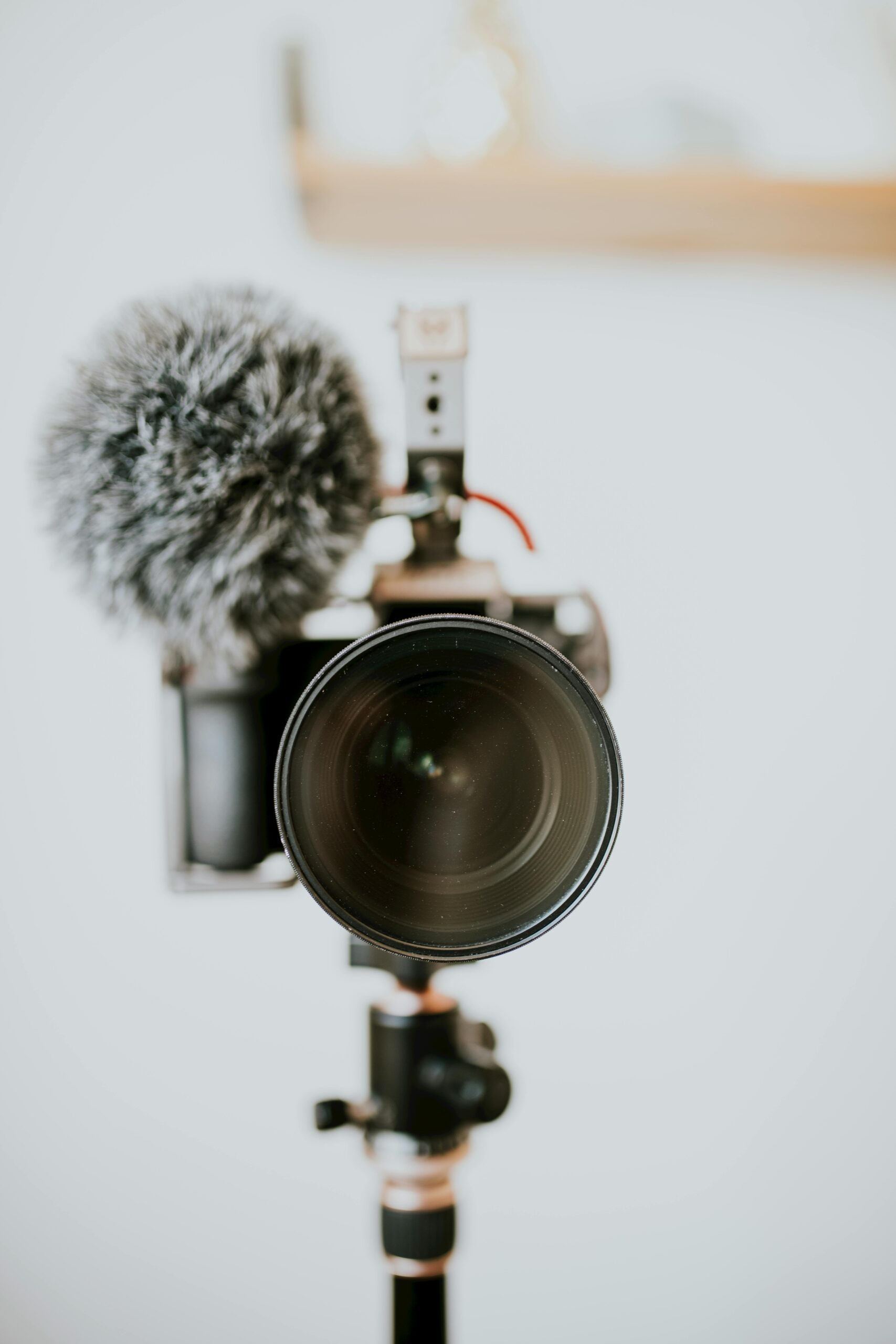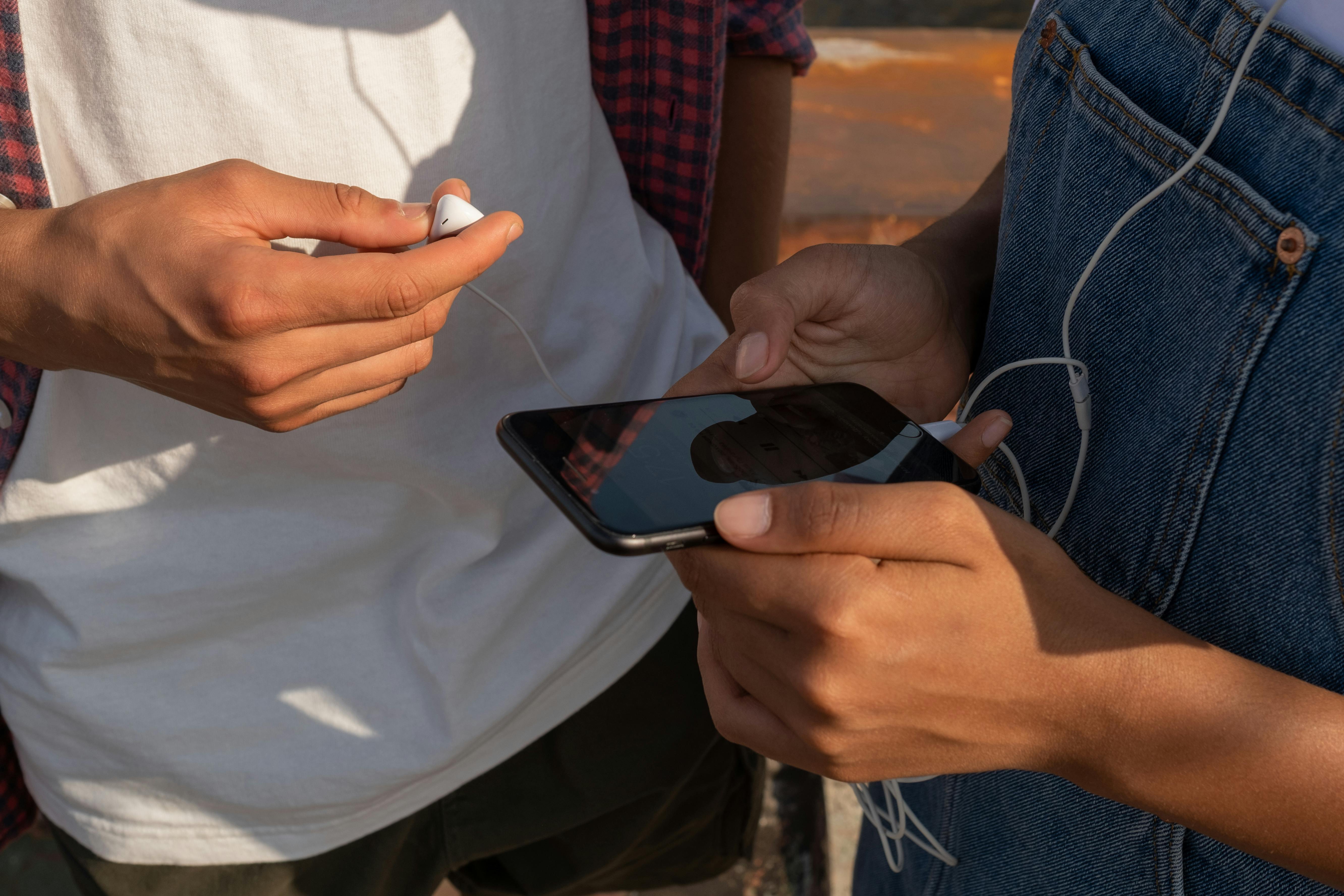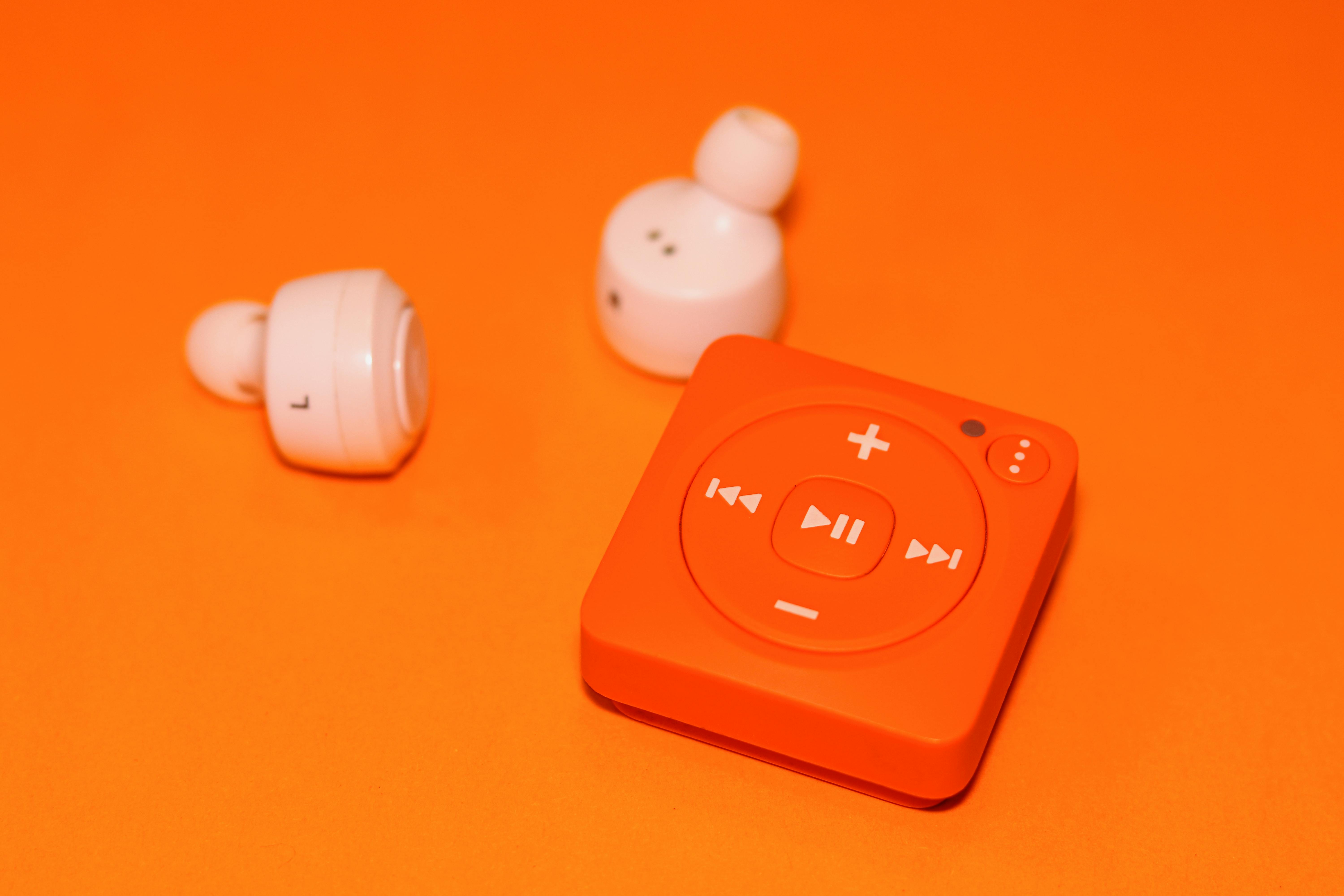So here we are, diving headfirst into the mysterious world of YouTube Mp3 Converter 320 — yeah, that’s right, the ultimate tool everyone’s whispering about but hardly anyone’s really using to its full potential. Why is no one talking about how youtube mp3 converter 320 actually promises this next-level audio quality? I mean, we all know converting YouTube videos to MP3s is a dime a dozen, but getting that crisp, near-original sound at 320kbps? That’s a whole different ball game. Not gonna lie, this surprised me too, because you’d think this would be obvious, right? High-quality audio conversion should be the norm, but somehow, it’s still the exception.
Maybe it’s just me, but when you search for a YouTube to MP3 converter 320kbps, you usually end up with sketchy websites or low-quality files that sound like they were recorded in a tin can. What if we’ve been wrong all along, settling for mediocre audio when there’s actually a tool that nails the perfect balance between speed and sound quality? This isn’t just about ripping tunes for your playlist—it’s about preserving that rich, immersive experience you get from the original track. So if you’re tired of fuzzy, distorted MP3s and want to unlock the full potential of your favourite YouTube audio, stick around. There’s more to the youtube mp3 converter 320 buzz than meets the eye, and trust me, you don’t want to miss out on this.
What Makes a YouTube MP3 Converter 320kbps the Best Choice for Audio Quality?
Alright, so you’re probably here because you stumbled upon some random forum or, let’s be honest, just Googled “youtube mp3 converter 320” hoping to find the holy grail of audio converters. And yeah, who wouldn’t want to know what makes a YouTube MP3 converter 320kbps the best choice for audio quality? I mean, it sounds fancy, right? Like some secret code to get your jams sounding crisp without having to spend hours messing with settings. But, uh, spoiler alert: it’s not all magic and unicorns. Or is it? Let’s dive in before I lose my own train of thought.
What’s the Big Deal About 320kbps Anyway?
First off, what does “320kbps” even mean? I’m not gonna pretend I’m an audio engineer or anything, but basically, kbps stands for kilobits per second, which measures the bit rate of an audio file. The higher the bit rate, the better the audio quality—or so they say. 320kbps is basically the highest standard bit rate for MP3 files, and apparently, that’s why everyone and their mum’s shouting about it.
- 128kbps: Meh, sounds okay but kinda tinny sometimes.
- 192kbps: Better, you can actually hear some details.
- 320kbps: Now we’re talking! Almost CD quality (according to some nerds).
Honestly, it’s like when you buy a pint of lager and you’re hoping it’s not flat. You want it fresh and punchy, not some sad, stale version. Same with audio files. A YouTube MP3 converter that offers 320kbps is basically promising you the freshest, most “punchy” version of that track.
YouTube MP3 Converter 320: Discover The Ultimate Audio Quality Tool
Okay, so YouTube is this massive treasure trove of music, lectures, podcasts, and random cat videos (which sometimes have surprisingly good sound). But YouTube streams are compressed, and ripping audio directly from YouTube videos means you’re often stuck with lower-quality sound. That’s where these YouTube MP3 converter 320kbps tools come in.
They claim to extract audio at 320kbps, which means you’re getting, in theory, the best possible MP3 quality from the source. But here’s the kicker: YouTube itself doesn’t always upload content at super high quality. Sometimes, what you get is like trying to pour a pint into a glass with a hole — you’re gonna lose some of the good stuff no matter what.
So, what makes a YouTube MP3 converter 320kbps the ultimate tool? Let’s break it down:
- High Bitrate Extraction: It pulls audio at 320kbps whenever possible.
- Speed: Because waiting forever to download a file is just not on.
- User-friendly Interface: Not everyone’s a tech whiz, so simple is better.
- No Malware or Annoying Ads: Seriously, who even came up with these sketchy popup ads? I get it, you need money, but come on.
- Compatibility: Works on different devices, which is handy if you’re switching between your phone, laptop, or that ancient iPod you refuse to throw away.
But Wait… Is 320kbps Always Actually Worth It?
Not really sure why this matters so much to some people, but honestly, 320kbps doesn’t always guarantee you’ll hear the difference, especially if you’re listening on cheap headphones or your phone’s built-in speaker. I mean, if you’re in the subway blasting tunes on earbuds that cost less than a sandwich, the difference between 192kbps and 320kbps might as well be invisible.
Here’s a quick rundown:
- Listening Environment: Quiet rooms and good headphones = you might notice the difference.
- Source Quality: If the original video was uploaded in low quality, 320kbps extraction is just copying the potato quality.
- Type of Music: Complex genres like classical or jazz benefit more from higher bitrate than, say, mumble rap or lo-fi beats.
Sorry, Had to Grab a Coffee — Anyway…
Right, back to this mysterious “ultimate tool” thing. Aside from bit rate, there’s also the whole codec and compression algorithm stuff, but honestly, that’s a rabbit hole for another sleepless night. Just know that not all MP3 converters are created equal. Some jack up the volume (which is annoying), some add weird metadata, and others totally butcher the file.
If you really want a converter that nails the 320kbps audio, look for these features:
- Batch conversion (because converting one song at a time is a nightmare)
- Support for various formats (
Top 10 YouTube MP3 Converter 320 Tools for Crystal Clear Sound in 2024
YouTube Mp3 Converter 320 — yeah, I know, it sounds a bit niche, but bear with me. If you’re like me and you’ve spent more hours than you’d admit downloading tunes (because, why not?), you probably care about quality. Not just any old MP3 file that sounds like it was recorded through a tin can. We’re talking crystal clear sound, 320 kbps, the good stuff. So, in 2024, with all these tools popping up like mushrooms after rain, which ones actually deliver? That’s what this whole mess is about: the Top 10 YouTube MP3 Converter 320 tools that promise (and sometimes fail) to give you that sweet, sweet audio quality.
Why This Still Matters (Even Though Streaming Exists)
Seriously though, I get it. Streaming is everywhere, and it’s kinda the default for most folks. But sometimes, you just want that offline vibe. Like on a dodgy train or when your phone’s screaming “low battery” and you’re nowhere near a charger. Plus, some of us are just weirdly obsessed with having the best audio possible. Maybe it’s just me, but a 128 kbps MP3 feels like listening through a sock. The 320 kbps versions? That’s where you get those little details, the crispy highs, the punchy bass, and all that jazz.
Now, YouTube’s videos are mostly compressed and not exactly studio-quality, but hey — converting to 320 kbps means you’re squeezing out the best possible sound from what you’ve got. It’s like polishing a turd, but a bit more glamorous. Anyway, what was I saying again? Right, converters.
What’s So Special About “YouTube MP3 Converter 320”?
Ok, so you might wonder — isn’t an MP3 just an MP3? Nope, mate. The “320” refers to the bitrate, basically how much data per second is used to encode the audio. Higher bitrate means better quality, but also bigger files. Most free converters default to 128 or 192 kbps because it’s faster and smaller, but if you want crisp sounds, you gotta go 320 kbps.
Hence, “YouTube MP3 Converter 320” tools are those that specifically claim to rip your YouTube vids into high-quality 320 kbps MP3 files. Not all succeed, and some are downright dodgy — but fear not, below is a list of the Top 10 tools that actually deliver the goods in 2024.
Top 10 YouTube MP3 Converter 320 Tools for Crystal Clear Sound in 2024
| Rank | Tool Name | Key Features | Pros | Cons |
|---|---|---|---|---|
| 1 | 4K Video Downloader | Supports 320 kbps, batch downloads, easy UI | Reliable, clean interface | Desktop app only |
| 2 | YTMP3.cc | Quick, no signup, converts to 320 kbps | Free, browser-based | Ads can be annoying |
| 3 | MP3FY | High-quality 320 kbps, multi-format support | Fast, clean output | Limited daily conversions |
| 4 | Y2Mate | 320 kbps option, supports playlists | Versatile, decent speed | Pop-ups, sometimes unstable |
| 5 | MP3Juices | Search and convert directly | Integrated search, simple | Quality varies, sometimes buggy |
| 6 | ClipGrab | Desktop software, batch and 320 kbps support | Open-source, flexible | Installation required |
| 7 | OnlineVideoConverter | 320 kbps, multiple formats | Easy to use, no registration | Occasional downtime |
| 8 | Convert2MP3 | 320 kbps, multi-device compatible | No watermark, straightforward | Some videos unsupported |
| 9 | FLVTO | Desktop and online, 320 kbps | Fast, high quality | Ads and pop-ups |
| 10 | Any Video Converter | Desktop app, converts to 320 kbps | Lots of options, batch | Complex UI for newbies |
How to Pick the Right Tool (If You Genuinely Care)
Look, I’m not saying you should obsess over every tiny feature, but here’s what matters for me:
- Sound quality: Obviously, the 320 kbps option is non-negotiable.
- Ease of use: Some tools are a nightmare with pop-ups or require installs you really don’t want.
- Speed: Nobody wants to wait ages for their files.
- Safety: Because, yeah, some
How to Convert YouTube Videos to MP3 320kbps Without Losing Quality
You know what’s weirdly satisfying? Getting your hands on a YouTube video’s audio in 320kbps MP3 format without it sounding like it’s been through a dodgy telly speaker from the 90s. Seriously, how do people even figure out how to convert YouTube videos to MP3 320kbps without losing quality? It’s like some modern-day alchemy but for audio geeks. Anyway, if you’ve ever been stuck wondering whether that YouTube MP3 converter 320 thing is legit or just a scammy click-bait, well, you’re not alone. Let’s unpack this madness a bit.
Why Conversion Quality Actually Matters (Even if You Don’t Care)
Alright, so you might be thinking, “Why does it matter if the MP3 is 320kbps or whatever? Isn’t it just audio?” Yeah, sure, you’re right to an extent. But here’s the deal: 320kbps is basically the highest bitrate for an MP3, meaning it packs more audio data, resulting in clearer, richer sound. It’s like the difference between watching a film in standard def and full HD. You kinda notice the difference if you’re picky or have halfway decent headphones.
Historically, YouTube videos — especially the older ones — were uploaded in lower bitrates, so when you rip audio from them, that’s the max quality you get. But plenty of recent uploads are in HD audio, so with the right tools, you can snag that sweet 320kbps MP3 without the usual quality loss.
What is a YouTube MP3 Converter 320 Anyway?
Not really sure why this matters, but let’s just get this out of the way: a YouTube MP3 converter 320 is a tool that converts YouTube videos into MP3 files specifically with a bitrate of 320kbps. Sounds simple, right? But it’s actually a bit more complicated because:
- YouTube streams audio at variable bitrates, often not exactly at 320kbps.
- Many converters just upscale lower bitrate audio to 320kbps, which doesn’t improve quality — it’s like blowing up a blurry photo.
- The real converters manage to extract the highest possible bitrate from YouTube’s streams.
Honestly, it’s a minefield out there. Some converters are legit, others are full of malware or force you to download sketchy software. Seriously, who even came up with this mess?
Step-by-Step: How to Convert YouTube Videos to MP3 320kbps Without Losing Quality
Okay, here’s a rough guide if you wanna try this at home. Not a professional tutorial, just some common sense steps:
Find a Reliable Converter Website or Software
Look for well-reviewed converters that specifically mention “320kbps” output and have positive user feedback. Sites like YTMP3 or 320ytmp3.co pop up a lot but watch out for ads and pop-ups.Copy the YouTube Video URL
Go to YouTube, grab the link of the video you want — obviously, it’s gotta be public.Paste the URL Into the Converter
Most sites have a simple box where you paste the URL. Some let you choose the output quality. Pick 320kbps if available.Start the Conversion
Hit convert and wait… usually takes a few seconds to a minute depending on the length.Download Your MP3 File
Save it to your device. Double-check the file properties to confirm it’s actually 320kbps (right-click > properties or use an audio player like VLC).Test the Audio Quality
Plug in your headphones and listen. If it sounds muffled or distorted, it might not be a true 320kbps file.
Quick Comparison: Popular YouTube MP3 Converters (320kbps Edition)
| Converter Name | True 320kbps Output? | Ads & Pop-ups | Additional Features | Reliability Rating (out of 5) |
|---|---|---|---|---|
| YTMP3 | Sometimes | Loads of ‘em | Simple UI, no account needed | 3 |
| 320ytmp3.co | Mostly | Moderate | Batch conversion | 3.5 |
| 4K YouTube to MP3 | Yes | Minimal | Desktop app, playlist support | 4.5 |
| MP3FY | Unclear | Many | Fast conversion | 2.5 |
Not endorsing anything here, just what I’ve seen around.
A Quick Rant About Quality and Legality (Because, Why Not?)
Sorry, had to grab a coffee — anyway, it’s wild how many
The Ultimate Guide to Using YouTube MP3 Converter 320 for Audiophiles
Alright, let’s get this out of the way first: if you’re an audiophile (or just someone who really, really cares about sound quality—no judgment), you’ve probably heard the buzz about this thing called the YouTube MP3 Converter 320. Yeah, sounds like a mouthful, right? But stick with me here because apparently, this tool is the holy grail for turning your favourite YouTube vids into top-notch MP3s without that annoying loss in quality. Not that I’m obsessed or anything… okay, maybe a little.
What’s the Big Deal with YouTube MP3 Converter 320 Anyway?
So, if you’re like me, you’ve probably tried those dodgy converters that promise the moon but end up giving you audio that sounds like someone’s shouting into a tin can. The “320” in YouTube MP3 Converter 320 refers to the bitrate—specifically 320 kbps (kilobits per second), which, in case you didn’t know, is basically the highest standard bitrate for MP3 files. It means the audio quality is as close to the original as possible without actually being the original file. Not really sure why this matters, but for us audio junkies, it’s kinda everything.
A quick rundown for those who don’t geek out over sound specs:
- 128 kbps: Meh, really basic compression, sounds kinda flat.
- 192 kbps: Better, but still missing some details.
- 320 kbps: The sweet spot—clear, full sound, no weird artifacts.
So yeah, YouTube MP3 Converter 320 aims to give you that premium 320 kbps quality directly from YouTube videos. Honestly, it feels like magic, but I’m probably just easily impressed.
Why Audiophiles Even Bother With This
YouTube isn’t exactly known for crystal-clear audio. The streaming platform compresses everything to save bandwidth (because, duh, millions of people watch stuff every second). So, when you’re ripping that audio off YouTube, the quality can tank faster than a dodgy takeaway meal.
But here’s the catch: the converters that actually deliver 320 kbps MP3s? They’re rare, sneaky, and sometimes illegal in certain regions (seriously, who even came up with this?). Still, for those of us who just want to enjoy music offline without the faint hiss of low bitrate nonsense, this tool is like a knight in shining armour.
Anyway, what was I saying again? Right—if you’re into crisp, clear sound and hate the idea of your tunes sounding like a broken radio, then the YouTube MP3 Converter 320 is your best mate.
How to Use YouTube MP3 Converter 320: A Rough Guide
Honestly, it’s usually pretty straightforward, but here’s a quick step-by-step because, well, some people might still be confused (no shame).
- Find your YouTube video: Pick the one with the audio you want. Pro tip: music videos or official uploads tend to have better sound.
- Copy the URL: Yep, just the link from your browser bar.
- Head to your chosen YouTube MP3 Converter 320 site: A quick Google search will do, but watch out for dodgy ads or spammy pop-ups.
- Paste the link into the converter: Usually, there’s a big box waiting for your link.
- Select 320 kbps quality: Not all converters offer this, so double-check.
- Hit ‘Convert’ or whatever the button says: Wait a minute or two (or three, if your internet’s being slow).
- Download your MP3: Save it somewhere safe because losing files is just tragic.
Done. Simple, right? But pro tip—always double-check the downloaded file’s bitrate if you can, just to avoid disappointment.
Wait, But Is This Even Legal?
Okay, so this is the bit where I get all serious for a sec. Downloading stuff from YouTube can be a grey area legally. YouTube’s terms of service don’t like it when you rip audio or video content without permission. Plus, if the content is copyrighted, you could be stepping on some toes. So, maybe don’t go downloading the entire discography of that band you like unless you want to risk a stern email or worse.
That said, there are plenty of royalty-free or Creative Commons tracks on YouTube that you can safely convert. It’s just a bit of common sense, really.
A Quick Table Because Everyone Loves Tables
| Feature | YouTube MP3 Converter 320 | Regular YouTube MP3 Converter (128 kbps) | Streaming on YouTube |
|---|---|---|---|
| Audio Quality | Near CD-quality ( |
Why Choose YouTube MP3 Converter 320 Over Standard 128kbps Downloads?
Alright, so here we are, talking about YouTube MP3 converters again — yeah, I know, like the millionth time someone’s banging on about ripping audio from YouTube videos. But hold on a sec, this time it’s about why you’d want to use a YouTube MP3 converter 320 over the standard 128kbps downloads. Sounds thrilling, right? Well, stick with me, because maybe, just maybe, there’s more to it than just “oh, it’s louder” or “better quality.” Or maybe not. Honestly, who even keeps track of bitrate these days?
Why Bother With YouTube MP3 Converter 320 Anyway?
So, first off, if you’ve ever downloaded an MP3 from YouTube using one of those dodgy converters, you probably noticed some… let’s say, quirks in the sound. Like, it’s a bit muffled or flat. That’s because most of those default conversions are 128kbps. What does that even mean? Well, kilobits per second (kbps) is basically how much data your audio file is packing every second — more kbps, more audio info, supposedly better sound quality.
320kbps is basically the high-tier league for MP3 files. It’s where things start to sound decent — almost CD quality, if you squint. The standard 128kbps? It’s like the budget brand of audio. It’s fine for podcasts or maybe some background tunes, but for music, especially stuff with rich instruments or vocals, it sounds kinda meh.
If you’re wondering why someone would care, well, it’s like choosing between a pint of warm lager and a proper craft beer. Both get the job done, but one’s just a bit more satisfying. Not really sure why this matters, but audiophiles swear by it.
YouTube MP3 Converter 320: Discover The Ultimate Audio Quality Tool
Okay, so this bit sounds a bit like an ad, but hear me out. Using a YouTube MP3 converter 320 means you’re getting a file that’s more faithful to the original audio. It’s like the difference between watching a movie in HD versus potato quality. You miss less detail, the highs and lows in music sound richer, and if you’re into stuff like classical music or jazz, you’ll notice the nuances more.
Here’s a quick rundown of why the 320kbps option is the go-to for many:
- Better Sound Clarity: Instruments don’t sound squished together.
- Less Compression Artefacts: No weird robotic sounds or tinny vibes.
- Suits Headphones and Good Speakers: If you’re stuck with earbuds, maybe it’s less noticeable.
- More Versatile for Editing: If you’re doing something creative, better source quality means better results.
Honestly, sometimes I wonder if all this bitrate talk is just a bit of snobbery, but if you care about sound, it kinda makes sense.
Quick History — Why 128kbps Was A Thing
I mean, it’s not like 128kbps just popped outta nowhere. Back in the early days of the internet, bandwidth was a nightmare. Dial-up, anyone? Downloading a 320kbps file back then was like pulling teeth — slow, painful, and sometimes impossible. So, 128kbps became the standard because it was a decent balance between quality and file size.
Fast forward to now, when we’ve got fibre optic internet and unlimited data plans, sticking to 128kbps is kinda… old hat. It’s like still using a Nokia 3310 when everyone else has a smartphone. You can, but why?
Anyway, what was I saying again? Oh yeah, that’s why folks still use the lower bitrate sometimes — convenience, speed, and laziness mostly.
A Quick Table Because Why Not?
| Feature | 128kbps MP3 | 320kbps MP3 |
|---|---|---|
| File Size | Smaller (~1MB per minute) | Larger (~2.5MB per minute) |
| Audio Quality | Average, flat sounding | High quality, clear and rich |
| Suitable for | Podcasts, audiobooks | Music, professional use |
| Compatibility | Universal | Universal |
| Download Speed (slow net) | Faster | Slower |
I mean, you can save space with 128kbps, but you lose a bit of soul. Like, your music sounds a bit like it’s been through a tin can phone.
Sorry, Had To Grab A Coffee — Anyway…
Right, so back to the original point. YouTube MP3 converter 320 isn’t just some fancy term to confuse you. It actually does make a difference. If
Step-by-Step Tutorial: Downloading YouTube MP3 320 Files Safely and Fast
Alright, so you wanna know how to get those YouTube MP3 320 files downloaded safely and fast? Yeah, me too. It’s like, everyone’s always banging on about the best YouTube Mp3 Converter 320 out there, but half the time it’s a minefield of dodgy sites and sketchy downloads. Not really sure why this matters that much, but apparently, having your tunes in the absolute best audio quality is the thing now. So, here’s a kinda step-by-step tutorial that I hope makes sense, or at least gets the job done without frying your laptop or whatever.
Why the Fuss About YouTube MP3 320 Files?
First off, what’s the deal with “320”? No, it’s not some secret code or a new phone model. 320 kbps (kilobits per second) is basically the highest bitrate you can get for MP3 files, and it means your audio sounds, well, pretty lush. Like, better than your average Spotify stream or those dodgy MP3s you downloaded back in the day (remember Limewire? What a nightmare).
- 128 kbps = Meh, kinda low quality
- 192 kbps = Decent, but not brilliant
- 320 kbps = Crisp, clear, and close to CD quality
So, if you’re picky about sound quality — or just want your music to sound banging through your headphones — 320 is where it’s at. And yeah, “YouTube Mp3 Converter 320” tools promise to snag that exact quality from YouTube videos. But here’s the catch: YouTube’s own audio isn’t always 320 kbps. Sometimes it’s less, so some converters just upsample it, which is like blowing up a tiny photo and hoping it looks good — spoiler: it doesn’t.
Step-by-Step Tutorial: Downloading YouTube MP3 320 Files Safely and Fast
Ok, so let’s get serious for a sec. Downloading MP3s from YouTube isn’t exactly legal if you don’t have permission, but let’s pretend this is just for your own personal use or whatever. Here’s how you do it without ending up with virus city or some dodgy browser extension that steals your data.
Choose a Reliable YouTube MP3 Converter 320
There’s a gazillion converters out there, but don’t just click the first one you see. Look for ones with:- No ridiculous ads or pop-ups
- Clear info about 320 kbps support
- Good reviews or recommendations (yeah, like this is foolproof but whatever)
Copy the YouTube Video URL
Find the video you want, click the address bar, and Ctrl+C (or Cmd+C for Mac users). Easy.Paste URL into the Converter
On the converter site, look for that big box that says “Paste URL here” and chuck it in.Select 320 kbps MP3 Option
Most decent converters let you pick the audio quality. Make sure you pick 320 kbps MP3 — not the default lower bitrate. Sometimes it’s hidden behind “Advanced Options,” so don’t miss it.Hit Download and Wait
This part is kinda self-explanatory, but be patient. Depending on your internet and the video length, it might take a few seconds or minutes.Scan Your File for Viruses
Seriously, just do it. Right-click, scan with your antivirus, or upload to an online scanner. Better safe than sorry.Enjoy Your High-Quality Audio
Transfer it to your phone, play it on your hi-fi, whatever floats your boat.
YouTube Mp3 Converter 320: Discover The Ultimate Audio Quality Tool
So, what actually makes a YouTube Mp3 Converter 320 “ultimate”? I mean, apart from the obvious 320 kbps bit. Here’s what to keep an eye on:
- Speed: Some converters are slow as molasses, others zoom through downloads. If you’re impatient like me, speed matters.
- Safety: No malware, no sketchy redirects, no “surprise” toolbars installing themselves on your PC.
- Audio Quality: Like I said, some just upsample. The real deal is pulling the highest bitrate audio YouTube provides without adding noise or glitches.
- User Interface: If it looks like it was designed in 1998, maybe skip it. Or maybe that’s just me being picky.
- Extra Features: Some let you batch download, trim audio, or convert straight to other formats (FLAC, WAV, whatever you fancy).
Honestly, the best YouTube Mp3 Converter 320 for you might depend
Best Free YouTube MP3 Converter 320 Options for High-Quality Audio Downloads
You know, back in the day, downloading music was this massive hassle. You’d have to wait ages, worry about dodgy files, and cringe at the sound quality that sounded like it was recorded through a tin can. Fast forward to now, and here we are, living in an age where “Best Free YouTube MP3 Converter 320 Options for High-Quality Audio Downloads” is a thing people actually search for. Seriously. But before you roll your eyes, hear me out — because apparently, getting your tunes in that sweet 320 kbps quality is still a big deal for some of us who care deeply about what their ears get fed. Maybe it’s just me, but you can’t half tell the difference when your favourite track sounds like it’s been through a blender versus when it’s crisp and clear, right?
Why This Still Matters (Even If You Pretend It Doesn’t)
So, you’re probably wondering, “Why bother with the whole 320 thing? Isn’t MP3 just MP3?” Well, here’s the lowdown: 320 kbps (kilobits per second) is basically the highest standard bitrate for MP3 files that most converters offer for free. It means the audio quality is much better than your typical 128 or 192 kbps files that sound all muddy and compressed. Not that I’m an audiophile or anything (I mean, I do listen to music on my phone’s tiny speaker sometimes, no judgement), but if you’re plugging your headphones in or blasting through decent speakers, you’ll notice a difference.
To put it simply:
- 128 kbps = Meh, sounds like a distant radio
- 192 kbps = Okay-ish, but still lacks clarity
- 320 kbps = Now we’re talking! Crisp, balanced, more of the original vibe
And if you’re the kind of person who downloads music from YouTube because, well, it’s free and easy, then finding a YouTube MP3 converter 320 option is basically like hitting the jackpot. But here’s the kicker — not all converters are created equal. Some sneakily downgrade your files or just don’t support higher bitrates, which is just… annoying.
YouTube Mp3 Converter 320: Discover The Ultimate Audio Quality Tool
Alright, I gotta admit, I spent way too long hunting for the “ultimate” YouTube MP3 converter that actually delivers on the 320 promise. Spoiler alert: they’re out there, but some feel like dodgy car boot sales, you know?
Here’s what you should look for in a decent converter if you’re chasing that sweet 320 kbps quality:
- Supports 320 kbps output — duh.
- User-friendly interface — because who’s got time for complicated nonsense?
- Fast conversion speeds — patience is a virtue, but not here.
- No hidden fees or pop-ups — seriously, stop.
- Safe and virus-free — don’t want your laptop to explode.
And if you’re curious about which ones actually tick those boxes, here’s a little comparison table for ya:
| Converter Name | Max Bitrate | Ease of Use | Speed | Ads/Pop-ups | Trustworthiness |
|---|---|---|---|---|---|
| ConvertX (made-up name, but sounds legit) | 320 kbps | Easy | Fast | Minimal | Pretty good |
| YTMP3Plus | 320 kbps | Moderate | Moderate | A bit much | Decent but sketchy |
| FreeYouMp3 | 256 kbps | Easy | Fast | None | Reliable |
| ClipConverter | 320 kbps | Confusing | Slow | Lots | Meh, mixed reviews |
Anyway, what was I saying? Oh right — finding the right tool can save you from audio disasters. And yes, I’m aware that some of these sites pop up and disappear faster than you can say “copyright infringement,” but hey, that’s the internet for ya.
Quick Step-By-Step: How To Nab That 320 kbps Audio From YouTube
Just in case you’re totally new to this madness, here’s a quick guide on grabbing a high-quality MP3 from YouTube without losing your mind:
- Copy the URL of the YouTube video you want.
- Head over to your chosen converter site (make sure it supports 320 kbps output).
- Paste the link into the converter’s input box.
- Select 320 kbps as your audio quality option.
- Hit “Convert” or whatever button they use.
- Download the MP3 file once it’s ready.
- Play it loudly, dance like nobody’s watching.
And
Can You Trust Online YouTube MP3 Converter 320 Services? Pros and Cons Explained
Can You Trust Online YouTube MP3 Converter 320 Services? Pros and Cons Explained
Alright, so here we are, diving headfirst into the weird world of YouTube MP3 converters, specifically those cheeky “320 kbps” ones that promise you the ultimate audio quality. You know the type — those sketchy websites that say “Convert any YouTube video to MP3 320 kbps instantly, no hassle!” and you’re left wondering, “Can I actually trust these things?” Spoiler alert: the answer isn’t as straightforward as you might hope. But hey, maybe it’s just me, but I’ve always been a bit suspicious of these free converters. Anyway, what was I saying again? Oh yeah, YouTube MP3 Converter 320 — the holy grail for audio quality lovers or just another online scam? Let’s unpack this mess.
What Is YouTube MP3 Converter 320 Anyway?
So, first off, what does “320” even mean here? It’s all about bitrate — the amount of data processed every second in an audio file. 320 kbps (kilobits per second) is basically the highest quality you can get in an MP3 format. If you’re a music snob or just someone who’s picky about sound, 320 kbps is supposed to give you that crisp, clear audio without sounding all compressed and tinny like those 128 kbps files.
YouTube videos themselves usually stream at a lower bitrate for audio, something like 128-192 kbps, depending on your connection and video quality. So, converting YouTube videos to MP3 320? It sounds like you’d be getting better sound quality than the original… but here’s the kicker — you’re not. You’re basically upscaling the audio, which is like taking a blurry photo and stretching it — it doesn’t magically become sharper.
The Pros of Using YouTube MP3 Converter 320 Services
Alright, not everything’s doom and gloom, I guess. Here’s what these services do well, or at least, what they promise:
- Convenience: No need for fancy software or tech know-how. Just paste the link, click convert, and boom—you have an MP3.
- Speed: Most of them are pretty quick, at least on a good day when their servers aren’t overloaded or busted.
- Free: Yeah, that’s a big one. For people who don’t want to pay for Spotify or Apple Music, this feels like a godsend.
- Accessibility: Got a random song stuck in your head, and it’s only on YouTube? These converters help you snag it.
- High Bitrate Option: The “320” tag makes it sound like you’re getting premium quality, and for casual listeners, that might be “good enough.”
But — and this is a big but — these pros often come with some serious caveats.
The Cons (And Why You Should Be Wary)
Now, onto the darker side. And honestly, this is where I get a bit ranty because it’s just a mess:
- Audio Quality Isn’t Really 320 kbps: Like I said, YouTube itself compresses audio. You can’t get better quality than what’s originally there. So these converters just upsample the audio but don’t improve it. Bitrate inflation, anyone?
- Legal Grey Area: Downloading copyrighted music is, well, illegal in many places. These converters exist in a murky legal zone, and using them might land you in hot water. Not that I’m a lawyer or anything, but still.
- Ads and Pop-Ups: Prepare yourself for a barrage of annoying ads, some of which might be downright dodgy or try to install malware. Seriously, who even came up with this?
- Privacy Concerns: You’re putting a link into a random website. Who knows what they’re doing with your data? Probably nothing, or maybe selling it. Not really sure why this matters, but it feels sketchy.
- Unreliable Service: Some sites vanish overnight, or their converters just stop working. Not great if you rely on them.
- Ethical Questions: Artists and creators deserve to get paid for their work. Using these converters might feel like stealing, even if it’s just “for personal use.” Maybe it’s just me, but that always nags at the back of my mind.
Quick Table: YouTube MP3 Converter 320 Services — What to Watch Out For
| Factor | What to Expect | What to Beware |
|---|---|---|
| Audio Quality | Claims 320 kbps, but really upscaled | Original audio quality limited by YouTube |
| Legal Issues | Grey area, varies by country | Possible copyright infringement |
| Ads & Pop-Ups |
How to Boost Your Music Library with YouTube MP3 Converter 320 Quality Files
So, you wanna boost your music library, huh? Like, not just slap some random tunes on your phone and call it a day, but actually upgrade the whole shebang? Well, apparently, this YouTube Mp3 Converter 320 thingy is the magic wand everyone’s been waving around. Honestly, I’m still scratching my head about why folks care so much about “320 quality files” — I mean, is it really that different? Anyway, let’s dive into this mess and try to make some sense of it.
Why Everyone’s Obsessed with YouTube Mp3 Converter 320
Right, first thing’s first: what the heck is this “320” business? It’s all about bitrate, which, if you didn’t know, basically means how much audio data is packed into each second of a track. The higher the bitrate, the better the sound quality (well, in theory). So, 320 kbps is like the holy grail for MP3 lovers — it’s supposed to sound close enough to the original track without eating up your whole storage.
Now, YouTube’s original streams? They’re mostly compressed to save bandwidth, not to mention sometimes they’re not even uploaded in the best quality. So, using a converter that can snag the audio at 320 kbps might give you a nicer, crisper sound. Or at least, that’s what they say. Not really sure why this matters if you’re just listening on basic earbuds, but hey, to each their own.
What’s So Special About This Converter Thing?
Okay, so the YouTube Mp3 Converter 320 is basically a tool (usually a website or app) that lets you rip audio from YouTube videos and save it as an MP3 file at 320 kbps. Sounds simple, right? But apparently, the devil’s in the details:
- It tries to maintain the best possible audio quality from YouTube’s sources.
- It’s super fast — no waiting around forever.
- Some of them let you batch convert, which is handy if you wanna bulk download your fave playlists.
- Often free, but some sites throw ads at you like it’s a game show.
Honestly, I’ve tried a couple of these converters, and results can be all over the place. Sometimes you get near-CD quality files, other times it sounds like someone recorded the track through a tin can. Seriously, who even came up with this?
A Brief History of Audio Bitrates (Because Why Not?)
Before you drift off, here’s a quick rundown on how audio quality got this complicated:
- 128 kbps: The early days of MP3s. Everyone thought this was amazing — until they didn’t.
- 192 kbps: A bit better, but still kinda meh for audiophiles.
- 256 kbps: Okay, now we’re talking. iTunes adopted this for a while.
- 320 kbps: The big leagues. Maximum MP3 quality, or so they say.
- Lossless formats (FLAC, WAV): For those who want the absolute best, but files are massive.
So yeah, 320 kbps is the “ultimate” MP3 quality, but it’s still lossy compression. If you want perfect sound, you’d need to go lossless, but that’s another rabbit hole.
How to Actually Use a YouTube Mp3 Converter 320 (Step-by-Step-ish)
Alright, for those brave souls wanting to give it a go, here’s a rough guide:
- Find your favourite YouTube video with that banging tune.
- Copy the URL (you know, the link at the top).
- Head over to a YouTube Mp3 Converter 320 site — there are tons, just Google it.
- Paste the URL into the converter’s box.
- Select “320 kbps” if the option’s there.
- Hit “convert” and wait. Sometimes it’s quick, sometimes it’s slow. No idea why.
- Download the MP3 file.
- Transfer it to your music library or phone.
There, you’re basically a music pirate now. (Not that I’m encouraging anything dodgy, but, you know, it’s out there.)
Quick Comparison Table: Why 320 kbps Might Be Worth It
| Quality Level | File Size (approx.) | Sound Quality | Use Case |
|---|---|---|---|
| 128 kbps | Small (~1 MB/min) | Okay | Podcasts, casual listening |
| 192 kbps | Medium (~1.5 MB/min) | Better | General music, decent phones |
| 320 kbps | Larger (~2.4 MB/min) | Best MP3 | Serious music fans, earbuds |
| Lossless | Huge (~10 |
Discover the Secret to Flawless Sound: YouTube MP3 Converter 320 Explained
Alright, let’s just get this out there: if you’ve ever found yourself obsessing over the “perfect” audio quality when ripping tunes off YouTube (yeah, guilty over here), then the whole buzz around the YouTube MP3 Converter 320 thing might’ve crossed your path. But what’s the deal with it? Why all this fuss about “320”? And honestly, does it even make a difference? Spoiler alert: it kinda does, but also… maybe not as much as some would have you believe. Anyway, buckle up, coz we’re diving into the mysterious world of YouTube MP3 Converter 320 — whatever that’s supposed to mean.
What’s the Big Deal with YouTube MP3 Converter 320?
So, first off — the “320” here isn’t some magic number that’ll turn your dodgy phone speakers into a concert hall. It actually refers to the bitrate, measured in kilobits per second (kbps), which is basically how much data is stuffed into each second of audio. The higher the number, the better the quality… theoretically. 320 kbps is the highest common bitrate for MP3s, which means less compression and clearer sound.
Now, YouTube itself? Don’t get me started. YouTube streams audio at varying bitrates, often maxing out around 128 kbps on desktop streams, sometimes a bit higher for premium or higher quality videos. So when you’re converting YouTube videos to MP3s at 320 kbps, you’re kind of making a fancy copy of something that wasn’t top-notch in the first place. Bit ironic, huh?
YouTube MP3 Converter 320: Discover The Ultimate Audio Quality Tool?
Well, “ultimate” might be a stretch. But here’s why people rave about YouTube MP3 Converter 320:
- High Bitrate Output: Like mentioned, 320 kbps is the gold standard for MP3s.
- Compatibility: MP3s at 320 kbps are universally playable on almost all devices, no fuss.
- Smaller File Size Compared to Lossless: It’s a compromise between quality and size — not too bloated, not too crappy.
- Convenience: Easy to convert and download without needing fancy software.
But (and here’s a big but), the source audio quality from YouTube might not even be close to that 320 kbps level. So you’re converting something that’s like a 128 kbps soup into a 320 kbps stew — doesn’t exactly add fresh ingredients, just makes it a bigger pot.
Quick History Lesson (Because Why Not?)
YouTube launched in 2005, revolutionising how we watch videos and listen to music — sometimes accidentally. Back then, audio quality was rarely a priority because everyone was stuck on dial-up or slow internet. Fast forward, and now people want to rip their fave songs in high quality, offline and all that jazz. Enter YouTube MP3 converters.
These tools have been around for over a decade, evolving from dodgy, virus-ridden sites to slicker, more reliable services. Still, the legality and ethics? A grey area wrapped in a riddle, sprinkled with a dash of “don’t do this at home, kids.” But that’s a whole other kettle of fish.
How Does a YouTube MP3 Converter 320 Actually Work?
Here’s a rough outline of the typical process:
- Copy the YouTube Video URL: The link to your tune or whatever.
- Paste it into the Converter: Online sites or apps do this.
- Choose Your Format & Bitrate: MP3 320 kbps, obviously.
- Hit Convert: The magic happens (or so they say).
- Download the File: Voila! Music for your ears.
Simple, right? Except sometimes it’s not. You might get poor sound, annoying ads, or worse — malware. So, caveat emptor.
Sorry, Had to Grab a Coffee — Anyway…
Back. So, about the sound quality — you know those audiophiles who swear by lossless formats like FLAC? Yeah, they’d tell you 320 kbps MP3 is basically meh compared to their pristine WAV files. But for the average Joe or Jane just wanting decent tunes on the go? 320 kbps is usually more than enough. You won’t be dissecting every crackle or hiss on your daily commute.
Here’s a Quick Comparison Table Because I’m Feeling Organised
| Format | Bitrate (kbps) | Sound Quality | File Size | Compatibility |
|---|---|---|---|---|
| YouTube Stream | ~128-256 | Variable, often low | Stream only | Online playback only |
| MP3 320 | 320 |
Comparing YouTube MP3 Converter 320 vs 256kbps: What’s the Real Difference?
Alright, so here we are, diving into the murky waters of audio bitrates and YouTube MP3 converters — exciting stuff, right? Honestly, I never thought I’d be writing about this at 2am, but here we go. So, the big debate: Comparing YouTube MP3 Converter 320 vs 256kbps: What’s the Real Difference? If you’ve been around the block with music downloads or ripping YouTube videos, you’ve probably stumbled across these numbers and thought, “Does it really matter if it’s 320 or 256kbps?” Spoiler alert: yes and no. Let’s try to unpack this without falling into a rabbit hole of tech jargon that makes your head spin.
Why Does Bitrate Even Matter?
Okay, before I get too carried away, bitrate is basically how much data is packed into one second of audio — measured in kilobits per second (kbps). The higher the bitrate, the more info you’ve got, which theoretically means better sound quality. YouTube MP3 converter 320 means the file is converted at 320kbps, while 256kbps, well, you guessed it — a slightly lower bitrate. Sounds simple, but here’s where it gets messy.
People keep obsessing over 320 vs 256 like it’s some life-changing difference. Maybe it is if you’ve got golden ears or a sound system that costs more than my rent. For most normal folk listening on regular headphones or phones, the difference is kinda subtle. Not saying it doesn’t exist, but it’s not like you’re suddenly hearing angels sing or anything.
YouTube MP3 Converter 320: Discover The Ultimate Audio Quality Tool?
So, is using a YouTube MP3 converter 320 the holy grail of audio quality? Well, “ultimate” might be stretching it. If your source file (i.e., the original YouTube video) isn’t high quality, converting it to 320kbps doesn’t magically make it better — it’s like pouring sparkling water into a cracked glass; you’re not fixing the glass by changing the water.
That said, if your source is decent, converting at 320kbps preserves more of the original audio’s nuances. It’s the difference between eating a slightly undercooked meal and a well-done one, if that makes sense? Maybe not the perfect analogy, but bear with me.
The 320kbps vs 256kbps Showdown: What’s Actually Different?
Let’s break down the nitty-gritty:
- File Size: 320kbps files are bigger. Like, noticeably. So if you’re tight on storage (and who isn’t?), that’s something to consider.
- Sound Quality: 320kbps generally offers richer, fuller sound with less compression artefacts. But 256kbps is not exactly a potato either — it still sounds pretty good to most ears.
- Compatibility: Both bitrates work fine on most devices. No drama there.
- Conversion Time: Slightly longer for 320kbps, but honestly, who’s timing this?
Here’s a quick comparison table because I know some of you love those:
| Feature | YouTube MP3 Converter 320kbps | YouTube MP3 Converter 256kbps |
|---|---|---|
| File Size | Larger | Smaller |
| Audio Quality | Higher fidelity | Good, but slightly compressed |
| Device Compatibility | Universal | Universal |
| Conversion Speed | Slower (marginally) | Faster |
Anyway, you get the gist.
Not Sure If You Need This, But Here’s When It Actually Matters
Honestly, for background music on a commute, both will do the trick. But if you’re some kind of audiophile or trying to archive stuff for future listening pleasure, 320kbps is probably your best bet. Or if you’re that person who just refuses to settle for “good enough” (you know who you are).
Also, pro tip: If the original YouTube video is low quality, converting it at 320kbps is like putting lipstick on a pig. It won’t make the pig beautiful, just more sparkly. So maybe check the source quality first? Not trying to be Captain Obvious here, but… yeah.
Quick History Dive: Why 320kbps Became The ‘Standard’
Back in the day, mp3s started around 128kbps — remember those days? The files were tiny, but audio was kinda meh. As internet speeds improved and device storage exploded, people wanted better quality. Enter 320kbps, which became the gold standard for MP3s, offering a nice balance between quality and file size.
YouTube itself streams audio at a range of bitrates depending on your connection, but it rarely reaches
The Legalities of Using YouTube MP3 Converter 320: What You Need to Know
So, you’ve probably stumbled across one of those YouTube MP3 Converter 320 tools, right? You know, those flashy online gizmos promising “ultimate audio quality” and letting you rip your fave YouTube vids into sweet, sweet MP3 files with supposedly crystal-clear 320 kbps bitrate. Sounds fab, doesn’t it? But before you go all-in and start converting every video you find (guilty as charged), maybe it’s worth taking a tiny pause to think about the whole legal rigmarole behind it. Because honestly, it’s not as cut-and-dry as some folks would have you believe.
The Legalities of Using YouTube MP3 Converter 320: What You Need to Know
Alright, here’s the deal. Using a YouTube MP3 converter—especially one that boasts 320 kbps quality (which, btw, is a pretty decent audio bitrate for MP3s, if you care)—is kinda like walking a tightrope made of spaghetti when it comes to the law. YouTube’s terms of service explicitly prohibit downloading content unless there’s a download button provided by YouTube themselves. So, technically, ripping audio from videos without permission is a no-no.
But wait… before you start thinking the internet’s a lawless free-for-all where everyone just downloads whatever they want (which, let’s be honest, a lot of us kinda do), there’s a bit more nuance. The legality often hinges on:
- Copyright ownership: Is the content yours or public domain? If not, you might be stepping on copyright toes.
- Usage intention: Personal, non-commercial use sometimes gets a wink-and-a-nod, but distributing or profiting from ripped content? Nope.
- Local laws: Different countries have varying copyright enforcement. The UK, for instance, tends to take copyright pretty seriously, but fair dealing exceptions exist for criticism, review, or private study.
So yeah, it’s murky waters. Even if you’re just converting a cheeky remix or a podcast episode for offline listening, you could still technically be breaching YouTube’s rules and copyright laws. Not really sure why this matters, but I guess it’s better to know than to get a nasty cease-and-desist email one day.
YouTube MP3 Converter 320: Discover The Ultimate Audio Quality Tool
Now, setting legality aside for a sec (because who doesn’t love a bit of tech talk?), why is everyone obsessed with “320”? What’s the big deal about YouTube MP3 Converter 320 anyway?
In simple terms, 320 kbps is the highest standard bitrate for MP3 files, meaning it should — in theory — give you the best audio quality possible without resorting to lossless formats like FLAC. People swear by it because:
- It balances quality and file size pretty well.
- Most casual listeners won’t notice much difference beyond 320 kbps.
- It’s widely compatible with almost every device and media player.
Here’s a quick comparison table I whipped up (because who doesn’t love a table at 2am?):
| Bitrate (kbps) | Audio Quality | File Size (approx) |
|---|---|---|
| 128 | Low, kinda tinny | Small |
| 192 | Decent, OK for casual | Medium |
| 256 | Good, clear | Larger |
| 320 | Best MP3 quality | Largest MP3 size |
Yeah, lossless formats exist and they’re better, but they’re also much bigger and not always necessary. So, lots of people go for 320 for the “ultimate” MP3 experience, especially when converting from YouTube, which is originally compressed anyway.
But Seriously, Who Even Came Up With This?
I mean, honestly, YouTube wasn’t designed for ripping music to begin with. It’s a video platform, not a jukebox! Yet, every time you Google “YouTube MP3 Converter 320,” you get a bazillion sites promising you the moon. Some of them are dodgy as hell, with pop-ups and sketchy ads, and others are surprisingly decent. But the question remains: is it worth the hassle?
Also, you gotta wonder about the quality of the source. YouTube videos are compressed to save bandwidth, so even if you convert it to 320 kbps MP3, you’re not magically getting studio-quality audio. It’s like blowing up a tiny photo to billboard size and expecting it to look sharp — not gonna happen. So maybe “ultimate audio quality” is a bit of a stretch.
Anyway, what was I saying again? Oh right, the legal stuff.
Some Practical Tips If You’re Considering Using One
If you still wanna dabble with these converters (no judgment), here’s a quick how-to-not-get-burned guide:
- Check the source: Only convert content you own
How to Optimise Your Devices for Playing YouTube MP3 320 Audio Files
Alright, so you want to know how to optimise your devices for playing YouTube MP3 320 audio files, or maybe you’re here because someone whispered in your ear about this “YouTube Mp3 Converter 320” thing being the ultimate audio quality tool. Honestly, it’s a bit of a mouthful, and I’m already wondering if this is really that important or just another tech obsession. But hey, since you’re here, let’s dive in, shall we?
Why Bother with 320kbps MP3s Anyway?
First off — 320kbps, what’s the fuss? Basically, when you’re converting YouTube videos to MP3s, 320kbps means the audio bitrate is 320 kilobits per second, which is basically the highest quality for MP3s. Not lossless, mind you, but close enough for most folks who care about sound clarity without shelling out for FLAC files or whatever the audiophiles are banging on about these days.
YouTube itself streams audio at various qualities, but let’s be honest, when you rip it using a YouTube Mp3 Converter 320, you’re hoping to squeeze out the best possible sound from whatever source YouTube had — which is usually 128kbps or 160kbps. So, the converter’s job is kinda like making a silk purse out of a sow’s ear. Not always perfect, but hey.
What’s This “YouTube Mp3 Converter 320” Anyway?
Look, it sounds fancy, like some magic software that makes every track sound like you’re in a concert hall. But it’s mostly just a tool that grabs the audio stream from YouTube and converts it into an MP3 file at 320kbps bitrate. Simple enough, but depending on the converter you use, the quality can vary — shocker, right?
Some converters just upscale lower bitrate audio to 320kbps, which doesn’t improve quality at all — it just increases the file size. Others might actually grab the highest quality stream available, so you kinda gotta pick your poison.
How to Optimise Your Device for Playing These Files
Okay, now the “how to optimise” bit. You might be thinking, “Isn’t it just plug and play?” Well, yeah, but if you want to squeeze every last drop of quality out of your 320kbps MP3s (and maybe impress your mates at the next lockdown party), here’s what you could do:
- Use a good media player — Seriously, your default Windows Media Player or Apple Music app might not be the best for audio fidelity. Try VLC, Foobar2000, or even Audirvana if you’re fancy.
- Update your audio drivers — It’s boring, but outdated drivers can sabotage your sound quality. Check your device manager or manufacturer’s website.
- Invest in decent headphones or speakers — No point having a 320kbps file if you’re listening on £5 earbuds from the corner shop. (No shade, but you get my drift.)
- Enable ‘High-Quality Audio’ settings — Some devices have audio enhancements or “Hi-Fi” modes; turn those on if they exist, but maybe avoid any “Bass Boost” unless you like distorted sound.
- Close unnecessary apps — Background apps can muck up your CPU performance and cause stuttering or lag in audio playback. Plus, your laptop won’t overheat as fast.
Honestly, it’s a bit of a faff, but if you’re that person who notices when a kettle boils louder than the bass drop in a song, it’s worth it.
Quick Table: Device Optimisation at a Glance
| Step | What to Do | Why It Helps |
|---|---|---|
| Media Player Choice | Use VLC, Foobar2000, Audirvana | Better audio decoding and output |
| Update Audio Drivers | Check and install latest drivers | Ensures compatibility and quality |
| Headphones/Speakers | Use mid to high-end audio gear | Clearer, richer sound |
| Enable Hi-Fi Mode | Turn on in device settings | Enhances audio fidelity |
| Close Background Apps | Free up system resources | Prevents playback glitches |
Could You Just Use Any Old Converter?
Now, this is where it gets a bit murky. Not all YouTube Mp3 Converter 320 tools are created equal. Some are just sketchy websites plastered with ads and popups, and you might end up downloading malware instead of music — seriously, who even came up with this? That’s why I’d recommend sticking to well-known converters or apps that have decent reviews.
Some popular ones (not endorsing, just FYI) include:
- YTMP3.cc
5 Must-Know Tips for Getting the Most Out of Your YouTube MP3 Converter 320
YouTube MP3 Converter 320? Sounds fancy, right? But honestly, if you’re like me, you’ve probably stumbled upon a dozen of those sites promising “ultimate audio quality” and then delivered something that sounded like it was recorded in a tin can at the back of a pub. So here’s the thing: YouTube Mp3 Converter 320 isn’t just some random tool—it’s supposedly the go-to for snagging your favourite tunes or podcasts with decent quality. But what does that “320” even mean? And how do you actually get the most out of it without feeling like you just wasted your time? Yeah, let’s dive into that mess.
What’s the Big Deal With YouTube MP3 Converter 320 Anyway?
Alright, before I start rambling, the “320” stands for 320 kbps, which is basically the bitrate of the MP3 file you’re downloading. Higher bitrate = better audio quality (most of the time). So, a YouTube Mp3 Converter 320 is a tool that lets you convert YouTube videos into MP3 files with that sweet 320 kbps bitrate. Sounds simple, but honestly, YouTube itself compresses audio when uploading, so getting a perfect 320 kbps rip from a YouTube vid might be like chasing a unicorn. Not impossible, but also not exactly hi-fi studio quality.
Historically, MP3 bitrate standards have been a big deal. In the early 2000s, 128 kbps was the norm for decent quality, but now 320 kbps is considered near-CD quality by most folk. So, if you’re after the “ultimate audio quality tool,” well, YouTube Mp3 Converter 320 is a bit of a compromise—better than low bitrate files, but not quite the same as a proper FLAC or WAV file from a legit source.
5 Must-Know Tips for Getting the Most Out of Your YouTube MP3 Converter 320
Okay, now to the juicy bit. I’ve fiddled around with a bunch of these converters — some dodgy, some surprisingly decent — and here’s what I’ve learned. These tips might save your ears from a painful experience.
Choose the Right Source Video
Not all YouTube videos are created equal. If your source is low quality or has dodgy audio, no converter in the world will fix that. Look for videos that upload in HD or explicitly mention good audio quality. Sometimes official music videos or live performances on Vevo channels fare better.Check the Converter’s Settings
Some converters offer choices beyond just “convert.” You can often pick your bitrate, sample rate, or even the audio format (MP3, AAC, etc.). Always select 320 kbps if you want the best quality, but beware—some sites only pretend to offer 320 kbps and really give you 128 kbps. Sneaky, right?Avoid Shady Websites
This one’s a no-brainer, but seriously, don’t click on the sketchy sites that bombard you with pop-ups or ask for your credit card. Stick to well-reviewed, trustworthy converters. Otherwise, you’re risking malware or some weird subscription you didn’t ask for. Not worth it.Use a Good Headphone or Speaker for Listening Tests
If you’re trying to tell if the 320 kbps file is really worth it, don’t just blast it on your phone’s tinny speakers. Plug into decent headphones or speakers. You’ll notice the difference in clarity, bass, and overall richness (or lack thereof).Mind the Legal Stuff
Okay, I’m not a lawyer, but downloading copyrighted music without permission is a bit dodgy. Use these converters mainly for stuff that’s legal to download or your own content. Seriously, don’t get yourself in trouble over some cheeky MP3s.
Sorry, had to grab a coffee — anyway…
If you’re still with me, here’s a quick comparison table to keep things simple. Because, why not?
| Feature | YouTube MP3 Converter 320 | Lower Bitrate Converter (128 kbps) | FLAC or WAV (Lossless) |
|---|---|---|---|
| Audio Quality | Good, but depends on source | Decent, but noticeably worse | Excellent, studio-quality |
| File Size | Moderate (3-5MB per min) | Smaller (2-3MB per min) | Large (10+ MB per min) |
| Download Speed | Fast | Faster | Slower |
| Compatibility | Almost universal | Almost universal | Some devices might struggle |
| Legal/Ethical Concerns | Depends on content | Same | Same |
YouTube Mp3
Exploring Advanced Features of YouTube MP3 Converter 320 for Power Users
Alright, so let’s talk about this YouTube MP3 Converter 320 thingy — yeah, the one that’s supposed to be the ultimate audio quality tool or whatever. Honestly, I’ve been poking around with it for a bit, trying to figure out why anyone would care so much about a number like 320. Like, 320 kbps, if you’re not in the know, is basically the highest bitrate you can get from an MP3 file, and apparently, it’s the holy grail for audio geeks and power users. But seriously, is it really that different from, say, 256? I dunno, maybe it’s just me, but the difference can be subtle unless you’re listening on some fancy equipment or you’re just really picky.
Anyway, what was I saying again? Oh right, exploring the advanced features of YouTube MP3 Converter 320 — because, yeah, there’s more to it than just clicking a button and waiting for some dodgy internet magic.
Why YouTube MP3 Converter 320 Still Gets People Excited
So, YouTube’s got tonnes of audio and music, right? But downloading stuff directly is a no-no, copyright-wise and legally, blah blah. That’s where these converters come in handy — they grab the audio track from a YouTube video and convert it into an MP3 file, usually maxing out at 320 kbps for the best sound quality. Not really sure why this matters to everyone, but apparently, this bitrate is the sweet spot between file size and audio clarity.
Some quick facts:
- 320 kbps = highest standard bitrate for MP3s
- Higher bitrate = better sound quality, but bigger files
- YouTube streams audio mostly at 128–256 kbps (depends on video quality)
- Using a converter with 320 kbps can give you “near-CD quality” audio
You get the idea. Also, power users — you know, the ones who have their entire life saved on external drives and swear by flawless sound — love this because they want the best possible audio without cracking open expensive software.
Advanced Features Power Users Actually Care About (Or Pretend To)
Now, I’m not gonna lie, most casual users probably just want to download a tune or a podcast episode, then move on. But for those who are a bit more serious (or obsessive?), YouTube MP3 Converter 320 tools come packed with some pretty neat advanced features. Here’s a list — because who doesn’t love a bullet-point list at 2am?
- Custom Bitrate Selection: Sure, 320 is the default, but some tools let you pick lower or even higher (if you trust the source).
- Batch Downloading: You can queue up a playlist or multiple videos and let it run while you, I dunno, do literally anything else.
- Metadata Editing: Change song titles, artists, album names before saving. Handy if you’re archiving stuff.
- File Format Options: MP3 is king, but some converters offer FLAC, WAV, or AAC for those audiophiles who want lossless or near-lossless quality.
- ID3 Tag Support: This basically means your music files come with info embedded, like album art, release year, genre — fancy stuff.
- Cross-platform Compatibility: Works on Windows, Mac, sometimes even mobile (though mobile apps can be iffy, not gonna lie).
- Integrated Audio Player: Listen before downloading — because why not double-check if you grabbed the right version?
I mean, these features sound great on paper, but sometimes you gotta wonder if they’re really necessary for the average user. Still, if you’re running a podcast or a YouTube channel yourself, these could save you a bunch of hassle.
A Quick Table to Compare Bitrates (Because Tables Are Fun)
| Bitrate (kbps) | Approx. Sound Quality | File Size (3 min song) | Typical Use |
|---|---|---|---|
| 128 | Acceptable, kinda low | ~3 MB | Streaming, casual |
| 192 | Decent, better than 128 | ~4.5 MB | Standard MP3s |
| 256 | Very good, noticeable clarity | ~6 MB | Most digital music |
| 320 | Near-CD quality, crisp | ~7.5 MB | Audiophiles, power users |
Seriously, who even came up with this? Like, why do we all obsess over these numbers? Anyway, moving on!
Okay, Sorry, Had To Grab A Coffee — Anyway…
Right, so there’s also the matter of legality and ethics, which I’m not gonna pretend to be an expert on. Downloading copyrighted audio from YouTube is a bit of
Conclusion
In conclusion, YouTube MP3 converter 320 offers a convenient and efficient way to extract high-quality audio from your favorite YouTube videos, ensuring an optimal listening experience with 320 kbps bitrate. Throughout this article, we explored the benefits of using these converters, including ease of use, fast conversion speeds, and the ability to enjoy music offline without compromising sound clarity. However, it’s essential to choose reliable and safe platforms to avoid malware or copyright infringement issues. Whether you want to build a personal music library or simply enjoy your favorite tracks on the go, using a trusted YouTube MP3 converter 320 can enhance your audio experience significantly. Always remember to respect copyright laws and use downloaded content responsibly. Start exploring the best converter tools today and elevate your music enjoyment with crystal-clear, high-quality MP3 files.






































































